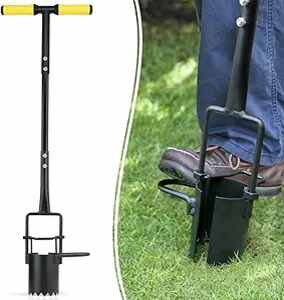Sustainable Gardening Practices for an Eco-Friendly Yard
Sustainable Gardening Practices for an Eco-Friendly Yard
Blog Article
The Comprehensive Guide to Gardening: Discover the Advantages of Different Styles and Methods
Gardening incorporates a diverse range of styles and strategies, each offering unique benefits customized to individual preferences and ecological contexts. As we check out these various styles, it becomes evident that the options made can significantly affect both the yard's wellness and its payment to the surrounding setting.
Understanding Horticulture Basics
Comprehending the fundamentals of gardening is vital for cultivating a flourishing and sustainable garden. A successful horticulture endeavor begins with a strong foundation of understanding pertaining to soil, plant choice, and environment factors to consider.
Selecting the right plants is just as essential. Recognizing their details needs-- such as sunshine, water, and spacing-- makes sure compatibility with the regional environment and soil conditions. This option procedure should also consider the growth practices and lifecycle of plants, enabling for a balanced and aesthetically pleasing yard.
Moreover, reliable sprinkling methods are vital. Over-watering and under-watering can both cause plant tension and illness. Implementing a schedule based upon seasonal modifications and plant requirements can boost water efficiency.
Popular Horticulture Styles
What specifies the significance of prominent horticulture styles? These styles envelop varied aesthetic concepts, practical demands, and ecological considerations, ultimately mirroring the garden enthusiast's personal vision. Amongst the most popular designs is the cottage yard, defined by its casual layout and a lively range of flowers and vegetables. This technique highlights a harmonious mix of color and texture, producing an inviting atmosphere.
Alternatively, the formal garden symbolizes balance and order, often featuring geometric patterns and carefully cut bushes. This design interacts elegance and elegance, with meticulously selected plants that strengthen an organized aesthetic.
The Japanese yard offers a peaceful and reflective experience, using all-natural aspects like water, stones, and plants to develop a relaxing environment. It concentrates on simplicity and equilibrium, motivating contemplation.
Additionally, xeriscaping has actually gained popularity, particularly in deserts (Gardening). It prioritizes drought-resistant plants and effective water use, promoting sustainability while boosting landscape appeal
Benefits of Container Horticulture
Container gardening supplies a wide variety of benefits that make it an enticing alternative for both beginner and experienced garden enthusiasts alike. One of the key advantages is adaptability; containers can be placed in various locations, enabling gardeners to optimize sunshine exposure and produce aesthetically appealing setups. This adaptability makes it feasible to yard precede where traditional in-ground horticulture might not be feasible, such as balconies, patio areas, or city environments.
In addition, container gardening supplies much better control over dirt conditions. Gardeners can tailor the soil mix to suit details plants, making certain optimal drain and nutrient availability. This is especially useful for people staying in locations with poor or infected dirt.
An additional substantial advantage is the lowered risk of bugs and conditions. Container click to investigate plants can be checked much more easily, and any kind of concerns can be dealt with without delay. Additionally, this method can reduce the spread of intrusive varieties.
Sustainable Horticulture Practices
Sustainable horticulture practices are necessary for promoting environmental health and wellness and improving biodiversity in our ecosystems. These methods prioritize environmental equilibrium, resource conservation, and the usage of organic techniques to reduce adverse environmental impacts. By utilizing strategies such as composting, garden enthusiasts can reduce waste while enriching soil health and wellness, therefore cultivating a growing yard ecosystem.
Water preservation is an additional essential aspect of sustainable gardening. Techniques such as rain harvesting, drip watering, and using drought-resistant plants can considerably reduce water use while making sure that plants receive adequate wetness. Integrating indigenous plant types into yard designs supports neighborhood wildlife and decreases the requirement for chemical fertilizers and chemicals, which can be hazardous to the environment.
Eventually, sustainable horticulture techniques not just add to much healthier yards however likewise advertise a more durable setting, providing lasting advantages to both the garden enthusiast and the bordering community.
Tips for Successful Gardening
To grow a successful garden, gardeners need to prioritize mindful planning and thoughtful implementation of their horticulture strategies. Begin by assessing the regional climate and soil problems, he has a good point as these elements significantly influence plant choice and growth. Pick plants that are appropriate to your environment, considering indigenous species that will thrive with very little treatment.
Implementing a well-structured layout is vital (Gardening). Make use of buddy planting methods to advertise biodiversity and all-natural parasite control, while making sure each plant has adequate space for growth. This not just improves aesthetics but additionally boosts general plant health and wellness
Regular upkeep is crucial to a successful garden. Develop next page a consistent timetable for watering, weeding, and feeding. Mulching can assist keep moisture and subdue weeds, while likewise adding raw material to the soil.
Do not underestimate the importance of monitoring. Regularly keeping an eye on plant health and wellness and growth will certainly enable prompt treatments. Be open to discovering and adapting; gardening is a continuous procedure that profits from experience and experimentation. By prioritizing cautious preparation, execution, and ongoing upkeep, gardeners can achieve a vivid and productive garden that grows throughout the periods.
Final Thought


In recap, the expedition of varied horticulture styles and techniques reveals their diverse benefits, adding to both aesthetic appeal and environmental wellness. Container horticulture offers flexibility and ease of access, while lasting practices boost environmental stewardship.
Report this page